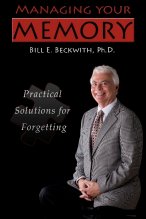Exercise Improves Mood
As discussed the past two weeks, depression is frequent in both community dwelling elders and those with dementia. No matter what the source of depression, the most effective treatment for depression is to get activated even though you don’t want to. This is true for the young as well as the elderly and for caregivers as well as care receivers. We have often discussed the benefits of exercise for cognitive skills but there is also considerable evidence suggesting that exercise improves mood.
For example, active people are less depressed on average than inactive people. Furthermore, people who exercise regularly and stop tend to show a decline in mood when compared to those who start or maintain exercise. A recent study randomly assigned depressed adults to an exercise group, a medication group, or a placebo group. Both exercise and medications improved mood compared to the placebo. A year later, those who continued to exercise were less depressed than those who stopped.
Another example of the benefits of exercise is found in diabetics. Diabetics report higher levels of depression than nondiabetics. Furhermore, those who are depressed and at risk of diabetes are more likely to develop diabetes. A twelve week exercise program improved mood in diabetes.
So why is it so hard to exercise when the benefits for cognition and mood are so clear? First, exercise is the antithesis of depression. Depression robs you of motivation and makes everything you do seem futile. Second, exercise takes time to improve mood. You must exercise consistently for 4-6 weeks to see benefits in mood. But it also takes antidepressants 4-6 weeks to improve mood when they work. There is no quick fix. Finally, some push too hard when they start to exercise. This causes discomfort and many don’t continue. Start slow, exercise despite contrary feelings, and be persistent.
How much exercise do you need to improve mood and cognition? Should your exercise plan consist of aerobic or resistance training? The best answer is that it is not clear. My belief is that some combination of both types of exercise is the best plan. Aim at a total time of about 2 and a half hours (that would be 5 days at 30 minutes a day) a week for aerobic training. Add resistance training twice a week. There is evidence that exercising outdoors improves mood more than exercising indoors. Consistency is far more importance than intensity.
It’s close to time for us to make behavioral changes for 2012. I suggest you take out your new calendar and mark your exercise schedule for the first 6 months. For many of us it is better to exercise in the morning as the day begins with a sense of accomplishment. Let the rest of life fill in around exercise. You will improve your mood.




